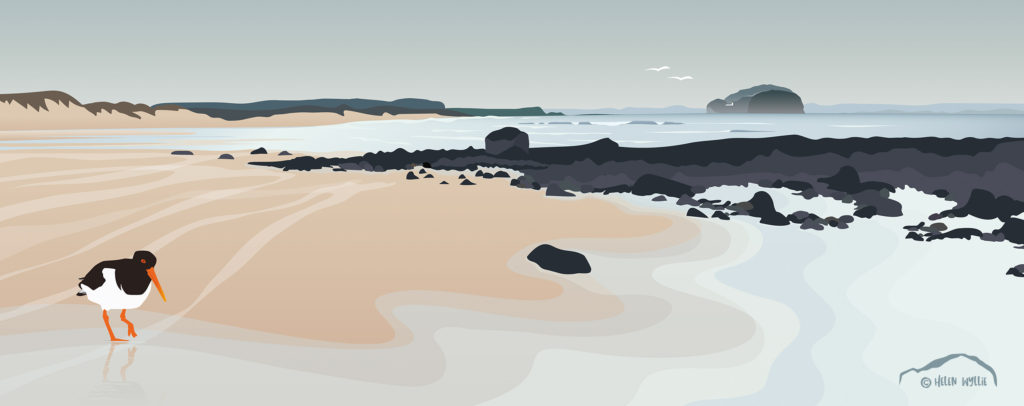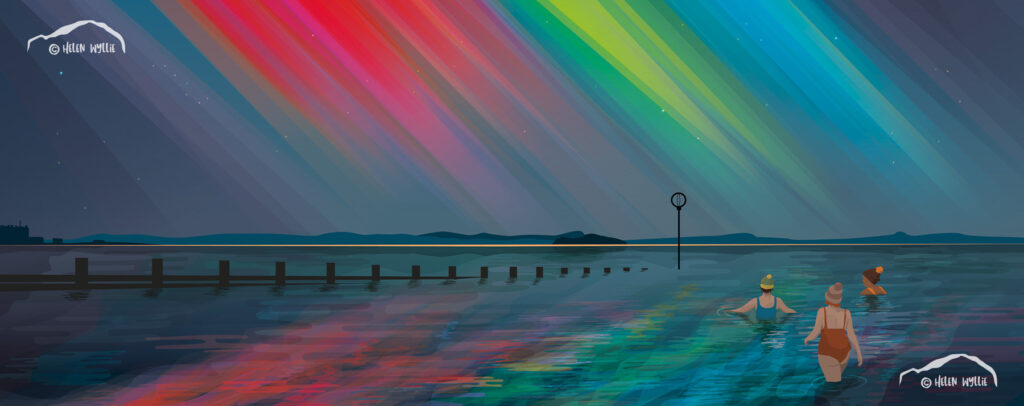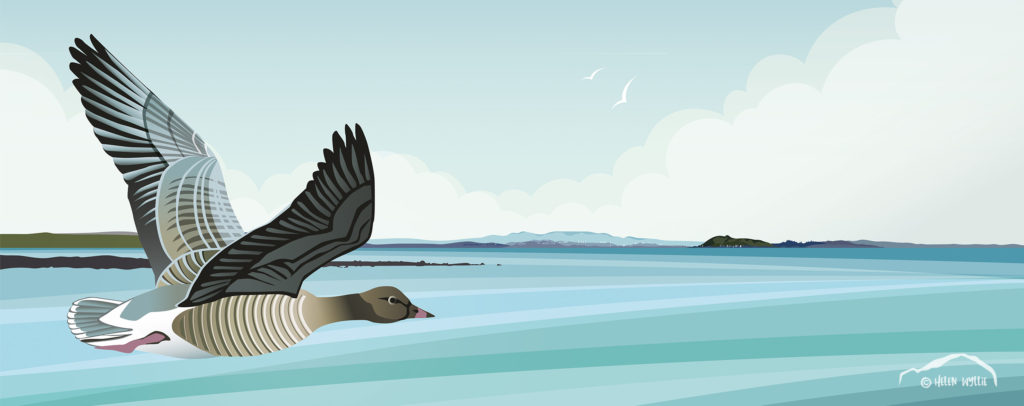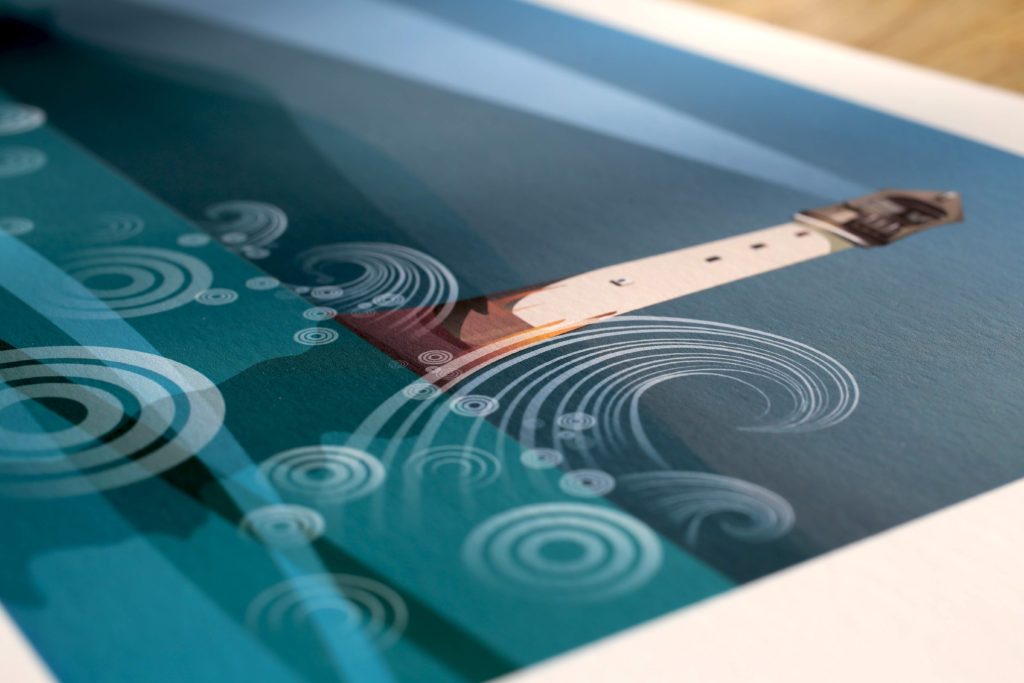< back

East Lothian coastal scene panoramic series

The Bass Rock, a mile off the coast at Tantallon Castle, is home to more than 150,000 Gannets and is the largest single rock gannetry in the world. The scientific name for the Northern Gannet, Sula Bassana, honours the Bass. The lower ledges of the rock are used by guillemots, razorbills, cormorants, puffins and gulls, not to mention seals. Currently uninhabited, the rock’s history includes being settled by an early Christian hermit, hosting a fortress which became a prison for Covenanters, and the construction of a lighthouse in 1902. View print.

Tyninghame Beach and Oystercatcher: the beach at Tyninghame is one of my favourites, with the long span of Ravensheugh sands (and its famous log cabin built in 1960 by the 12th Earl of Haddington) as well as the rocks and woods all around. And, of course, the view of the Bass Rock. View this print in my shop.

Aurora Swim, Portobello. I originally drew this with totally different aurora, but then the Great Aurora Night of October 2024 happened and I had to re-make it to more resemble what i actually saw! They were very angular and diagonal. This ‘swim’ is more like the dipping I do – my earlier Yellowcraigs Swim image was definitely of a more serious swimmer! View the print.

Bell Rock Lighthouse, built by Robert Stevenson between 1807 and 1811, is the world’s oldest surviving sea-washed lighthouse. Sitting 11 miles off the coast of Arbroath in the North Sea, the rock was famous for shipwrecks, being hidden below the surface of the sea for all but a few hours at low tide. Construction was challenging (so much so that it featured in a BBC documentary as one of the seven industrial wonders of the world) but no accidents have been recorded since the first light was emitted in February 1811. The lighthouse has been automated since 1988. View this print.

Boxing Day, Belhaven Bay: This glorious beach is part of the park named after John Muir, explorer and naturalist, who was born in Dunbar in 1838. He moved to the States as a child and is generally claimed by them, being dubbed America’s founder of National Parks. He’s ours though. View this print.

Pink-footed Goose, Aberlady Bay: thousands of pink-footed geese migrate to Aberlady Bay for the winter, having spent their summer further north. This one’s flying out from the bay, over Kilspindie golf course, with Edinburgh and Arthur’s Seat in the background. This illustration is available as a greetings card at the moment, but is print-ready if you’d like a print of it.

Tantallon Castle and shag: Tantallon, a semi-ruined mid-14th-century fortress near North Berwick is one of my favourite local castles – great for views and a sense of drama. Built by the Douglas family, they managed to keep it in the family for generations in spite of relentless sieges (James IV and James V both had a go). Naturally, I snuck the Bass Rock in – any excuse – and this time round I’ve included a shag who, given the angle, must be at Sea Cliff. The whole picture is drawn with straight lines – I loved the challenge. View this print.

Tantallon Castle, this time with the pink-footed goose flying home for winter. I created this illustration originally for East Lothian Council’s Christmas Card a few years ago (there were snow flakes in that version). View this print.

Fidra, sitting 2.5 miles north-west of North Berwick, is now an RSPB reserve. Its grassy slopes and cliffs are home to small populations of guillemots, razorbills, gulls and puffins. Robert Louis Stevenson often visited the area and it is claimed he based his map of Treasure Island on the shape of Fidra. I’ve still to make a product listing for this print – if you’d like it, use any panoramic listing and write me a note!



Prints and gifts are available in my shop. If you don’t see the one you’d like, please get in touch via email –[email protected].


